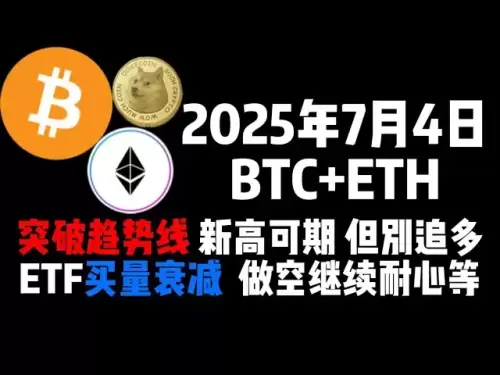-
 Bitcoin
Bitcoin $107,758.1435
-1.45% -
 Ethereum
Ethereum $2,490.6114
-3.32% -
 Tether USDt
Tether USDt $1.0004
0.00% -
 XRP
XRP $2.2042
-2.04% -
 BNB
BNB $651.4818
-1.12% -
 Solana
Solana $145.8782
-3.02% -
 USDC
USDC $0.9999
0.00% -
 TRON
TRON $0.2819
-1.39% -
 Dogecoin
Dogecoin $0.1621
-4.58% -
 Cardano
Cardano $0.5658
-4.18% -
 Hyperliquid
Hyperliquid $37.8181
-6.63% -
 Sui
Sui $2.8404
-4.91% -
 Bitcoin Cash
Bitcoin Cash $481.3703
-2.30% -
 Chainlink
Chainlink $13.0043
-4.79% -
 UNUS SED LEO
UNUS SED LEO $9.0464
0.26% -
 Avalanche
Avalanche $17.6115
-4.39% -
 Stellar
Stellar $0.2359
-2.11% -
 Toncoin
Toncoin $2.7507
-3.93% -
 Shiba Inu
Shiba Inu $0.0...01126
-4.41% -
 Litecoin
Litecoin $86.1256
-3.27% -
 Hedera
Hedera $0.1530
-3.13% -
 Monero
Monero $312.7785
-2.81% -
 Dai
Dai $1.0000
-0.01% -
 Ethena USDe
Ethena USDe $1.0001
-0.02% -
 Polkadot
Polkadot $3.3287
-5.55% -
 Bitget Token
Bitget Token $4.3840
-4.00% -
 Uniswap
Uniswap $6.8370
-10.63% -
 Pepe
Pepe $0.0...09548
-4.25% -
 Aave
Aave $260.2526
-6.11% -
 Pi
Pi $0.4658
-5.45%
How does the Trezor wallet interact with third-party DApps?
Trezor wallet securely interacts with DApps via offline transaction signing, ensuring private keys remain safe while users engage with blockchain services.
Apr 10, 2025 at 10:35 pm
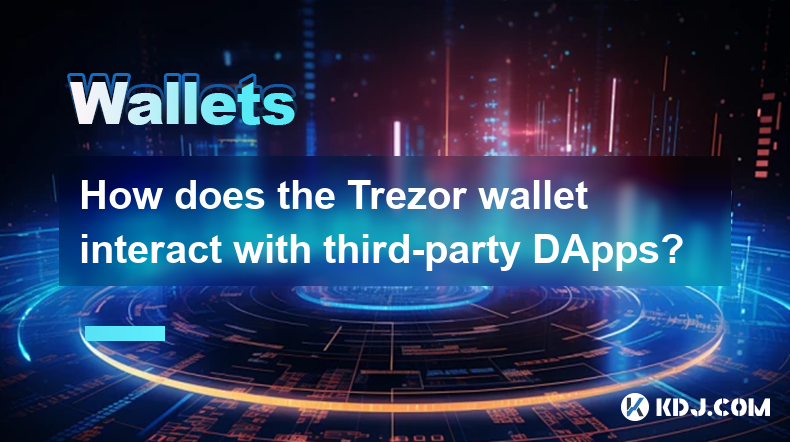
The Trezor hardware wallet is a popular choice among cryptocurrency enthusiasts for its robust security features and user-friendly interface. One of the key functionalities of the Trezor wallet is its ability to interact with third-party decentralized applications (DApps). This interaction allows users to securely manage their cryptocurrencies and engage with various blockchain-based services. In this article, we will explore how the Trezor wallet interacts with third-party DApps, detailing the process and highlighting the security measures in place.
Understanding the Basics of Trezor and DApps
Before diving into the specifics of how the Trezor wallet interacts with third-party DApps, it's essential to understand the basics of both components. Trezor is a hardware wallet that stores private keys offline, providing a high level of security against online threats. DApps, on the other hand, are decentralized applications that run on blockchain networks, offering various services such as trading, lending, and gaming.
The interaction between Trezor and DApps is facilitated through a process known as signing transactions. When a user wants to interact with a DApp, the Trezor wallet signs the transaction offline, ensuring that the private keys never leave the device. This process maintains the security of the user's funds while allowing them to engage with the DApp's functionalities.
Setting Up Trezor for DApp Interaction
To begin interacting with third-party DApps using your Trezor wallet, you need to set up your device correctly. Here are the steps to follow:
- Connect your Trezor device to your computer using the provided USB cable.
- Install the Trezor Bridge software, which is necessary for the device to communicate with your computer.
- Open the Trezor Suite application on your computer. This is the official software provided by Trezor for managing your wallet.
- Initialize your Trezor device if it's your first time using it. Follow the on-screen instructions to set up a PIN and generate a recovery seed.
- Add your cryptocurrency accounts to the Trezor Suite. You can do this by selecting the desired cryptocurrency and following the prompts to create a new account.
Once your Trezor is set up, you can proceed to interact with DApps.
Accessing DApps with Trezor
To access a DApp using your Trezor wallet, you typically need to follow these steps:
- Navigate to the DApp's website using a compatible web browser such as Google Chrome or Firefox.
- Connect your Trezor device to your computer if it's not already connected.
- Click on the "Connect Wallet" or similar button on the DApp's interface. This will prompt you to select your wallet provider.
- Select Trezor from the list of available wallet providers. This will initiate the connection process.
- Confirm the connection on your Trezor device. You will be prompted to confirm the connection request on the device's screen.
- Authorize the DApp to access your wallet. This step may involve signing a message or transaction to verify your identity.
Once connected, you can use the DApp's features, such as trading, staking, or participating in governance, while your Trezor wallet handles the transaction signing process securely.
Signing Transactions with Trezor
When you perform an action on a DApp that requires a transaction, such as sending cryptocurrency or interacting with a smart contract, the Trezor wallet will handle the signing process. Here's how it works:
- Initiate the transaction on the DApp's interface. This could be a simple transfer of funds or a more complex interaction with a smart contract.
- The DApp will generate a transaction request and send it to your Trezor wallet for signing.
- Your Trezor device will display the transaction details on its screen, including the recipient address, amount, and any associated fees.
- Review the transaction details carefully on your Trezor device. This step is crucial for ensuring that you are not signing a malicious transaction.
- Confirm the transaction on your Trezor device by entering your PIN and pressing the confirmation button.
- The signed transaction is then sent back to the DApp, which will broadcast it to the blockchain network for processing.
This process ensures that your private keys remain secure within the Trezor device, reducing the risk of unauthorized access to your funds.
Security Measures and Best Practices
When interacting with third-party DApps using your Trezor wallet, it's important to follow best practices to maintain the security of your funds. Here are some key security measures to consider:
- Always verify the DApp's authenticity before connecting your wallet. Look for official endorsements and user reviews to ensure that the DApp is legitimate.
- Use a secure internet connection when interacting with DApps. Avoid using public Wi-Fi networks, as they may be vulnerable to hacking attempts.
- Regularly update your Trezor firmware to ensure that you have the latest security patches and features.
- Enable two-factor authentication (2FA) on your Trezor Suite account to add an extra layer of security.
- Be cautious of phishing attempts. Always double-check the URL of the DApp's website and never enter your recovery seed on any website.
By following these best practices, you can enhance the security of your interactions with third-party DApps using your Trezor wallet.
Troubleshooting Common Issues
While interacting with DApps using your Trezor wallet is generally straightforward, you may encounter some common issues. Here are some troubleshooting tips:
- Connection issues: If your Trezor device is not connecting to the DApp, ensure that the Trezor Bridge software is installed and running. Also, check that your USB cable is properly connected and that your device is not in bootloader mode.
- Transaction errors: If a transaction fails to sign or broadcast, double-check the transaction details on your Trezor device. Ensure that you have sufficient funds and that the network fees are set correctly.
- DApp compatibility: Some DApps may not be fully compatible with Trezor wallets. Check the DApp's documentation or support forums to see if there are known issues or workarounds.
By addressing these common issues, you can ensure a smoother experience when interacting with third-party DApps using your Trezor wallet.
Frequently Asked Questions
Q: Can I use my Trezor wallet with any DApp?
A: While Trezor wallets are compatible with many DApps, not all DApps support Trezor. It's important to check the DApp's documentation or support forums to confirm compatibility before attempting to connect your wallet.
Q: Is it safe to connect my Trezor wallet to a DApp?
A: Connecting your Trezor wallet to a DApp is generally safe as long as you follow best practices and verify the DApp's authenticity. The Trezor wallet's offline signing process ensures that your private keys remain secure.
Q: What should I do if I suspect a DApp is trying to scam me?
A: If you suspect a DApp is attempting to scam you, immediately disconnect your Trezor wallet and report the DApp to the relevant authorities or community forums. Never enter your recovery seed on any website, and always verify the authenticity of the DApp before connecting your wallet.
Q: Can I use my Trezor wallet with mobile DApps?
A: Currently, Trezor wallets are primarily designed for use with desktop applications. While some mobile DApps may support Trezor wallets through third-party integrations, the experience may vary. Always check the DApp's documentation for mobile compatibility.
Disclaimer:info@kdj.com
The information provided is not trading advice. kdj.com does not assume any responsibility for any investments made based on the information provided in this article. Cryptocurrencies are highly volatile and it is highly recommended that you invest with caution after thorough research!
If you believe that the content used on this website infringes your copyright, please contact us immediately (info@kdj.com) and we will delete it promptly.
- Bitcoin's Pattern Break: Are HODLers the Key to the Next Surge?
- 2025-07-04 18:50:12
- Bitcoin Price, Trump's Bill, and the $150K Dream: A NYC Take
- 2025-07-04 19:50:12
- Ethereum, LILPEPE, and the July Bounce: Will Pepe Steal ETH's Thunder?
- 2025-07-04 19:10:12
- Binance Institutional Loans: Unlocking 4x Leverage and Zero Interest for Whales
- 2025-07-04 19:15:12
- Bitcoin Bull Run: Analysts Eye Peak in Late 2025?
- 2025-07-04 19:20:13
- Pepe Indicators, Bullish Forecast: Can the Meme Coin Rally?
- 2025-07-04 19:25:12
Related knowledge
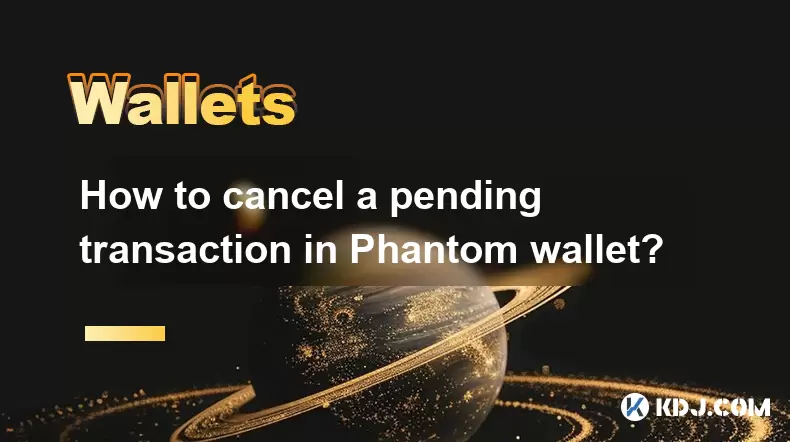
How to cancel a pending transaction in Phantom wallet?
Jul 03,2025 at 07:21pm
Understanding Pending Transactions in Phantom WalletA pending transaction in the Phantom wallet occurs when a user initiates a transfer or interaction with the Solana blockchain, but it hasn't yet been confirmed by the network. This can happen due to various reasons such as low transaction fees, network congestion, or incorrect gas settings. It's import...
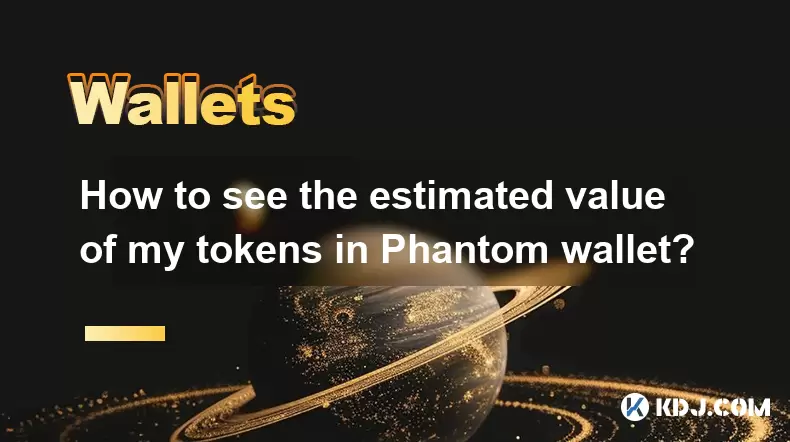
How to see the estimated value of my tokens in Phantom wallet?
Jul 04,2025 at 12:21am
What is Phantom Wallet?Phantom wallet is one of the most popular cryptocurrency wallets designed for the Solana blockchain. It allows users to store, send, receive, and manage various tokens built on Solana, including SPL tokens and NFTs. The wallet offers a user-friendly interface, making it accessible for both beginners and advanced users in the crypt...
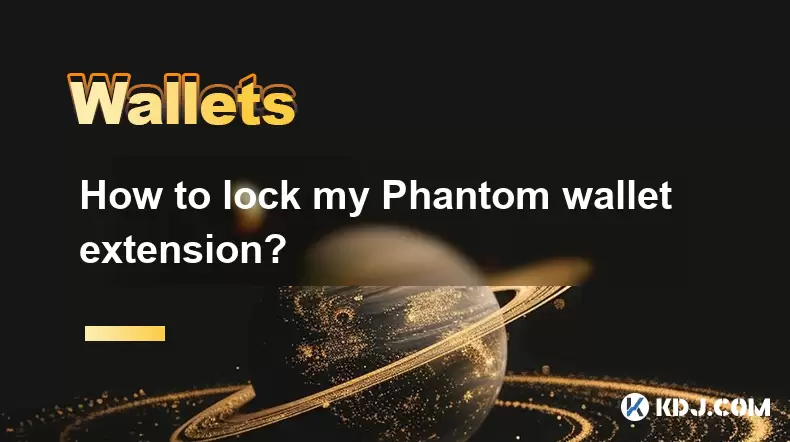
How to lock my Phantom wallet extension?
Jul 03,2025 at 11:14am
What Is the Phantom Wallet and Why Lock It?The Phantom wallet is a popular non-custodial cryptocurrency wallet designed for interacting with the Solana blockchain. Supporting both browser extensions and mobile apps, Phantom allows users to store, send, receive, and stake SOL tokens, as well as interact with decentralized applications (dApps). Securing y...

Does Phantom wallet offer two-factor authentication (2FA)?
Jul 03,2025 at 09:00am
Understanding Phantom Wallet and Its Security FeaturesPhantom wallet is a widely used non-custodial cryptocurrency wallet that supports the Solana blockchain. It allows users to store, send, receive, and interact with decentralized applications (dApps) seamlessly. As security is a top priority for any crypto wallet user, security features like two-facto...
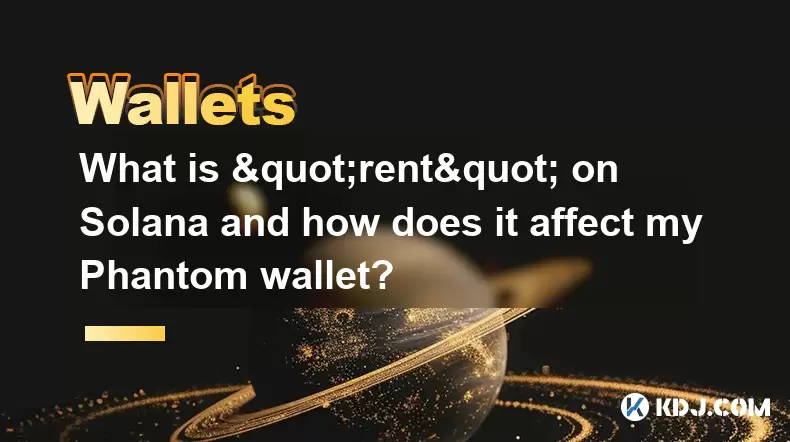
What is "rent" on Solana and how does it affect my Phantom wallet?
Jul 02,2025 at 08:35pm
Understanding 'Rent' on SolanaIn the context of Solana, the term 'rent' refers to a storage fee that users pay for maintaining data on the blockchain. Unlike Ethereum, where storage costs are paid once via gas fees during contract deployment, Solana implements a recurring cost model to ensure efficient usage of network resources. This means that any acc...
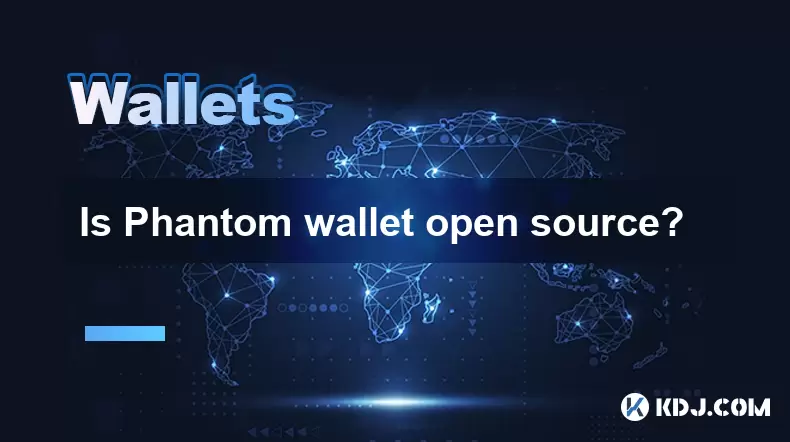
Is Phantom wallet open source?
Jul 03,2025 at 12:29am
What is Phantom Wallet?Phantom wallet is a non-custodial cryptocurrency wallet primarily designed for the Solana blockchain. It allows users to store, send, receive, and interact with decentralized applications (dApps) on the Solana network. The wallet is available as a browser extension and mobile application, offering a seamless experience for both be...

How to cancel a pending transaction in Phantom wallet?
Jul 03,2025 at 07:21pm
Understanding Pending Transactions in Phantom WalletA pending transaction in the Phantom wallet occurs when a user initiates a transfer or interaction with the Solana blockchain, but it hasn't yet been confirmed by the network. This can happen due to various reasons such as low transaction fees, network congestion, or incorrect gas settings. It's import...

How to see the estimated value of my tokens in Phantom wallet?
Jul 04,2025 at 12:21am
What is Phantom Wallet?Phantom wallet is one of the most popular cryptocurrency wallets designed for the Solana blockchain. It allows users to store, send, receive, and manage various tokens built on Solana, including SPL tokens and NFTs. The wallet offers a user-friendly interface, making it accessible for both beginners and advanced users in the crypt...

How to lock my Phantom wallet extension?
Jul 03,2025 at 11:14am
What Is the Phantom Wallet and Why Lock It?The Phantom wallet is a popular non-custodial cryptocurrency wallet designed for interacting with the Solana blockchain. Supporting both browser extensions and mobile apps, Phantom allows users to store, send, receive, and stake SOL tokens, as well as interact with decentralized applications (dApps). Securing y...

Does Phantom wallet offer two-factor authentication (2FA)?
Jul 03,2025 at 09:00am
Understanding Phantom Wallet and Its Security FeaturesPhantom wallet is a widely used non-custodial cryptocurrency wallet that supports the Solana blockchain. It allows users to store, send, receive, and interact with decentralized applications (dApps) seamlessly. As security is a top priority for any crypto wallet user, security features like two-facto...

What is "rent" on Solana and how does it affect my Phantom wallet?
Jul 02,2025 at 08:35pm
Understanding 'Rent' on SolanaIn the context of Solana, the term 'rent' refers to a storage fee that users pay for maintaining data on the blockchain. Unlike Ethereum, where storage costs are paid once via gas fees during contract deployment, Solana implements a recurring cost model to ensure efficient usage of network resources. This means that any acc...

Is Phantom wallet open source?
Jul 03,2025 at 12:29am
What is Phantom Wallet?Phantom wallet is a non-custodial cryptocurrency wallet primarily designed for the Solana blockchain. It allows users to store, send, receive, and interact with decentralized applications (dApps) on the Solana network. The wallet is available as a browser extension and mobile application, offering a seamless experience for both be...
See all articles

























